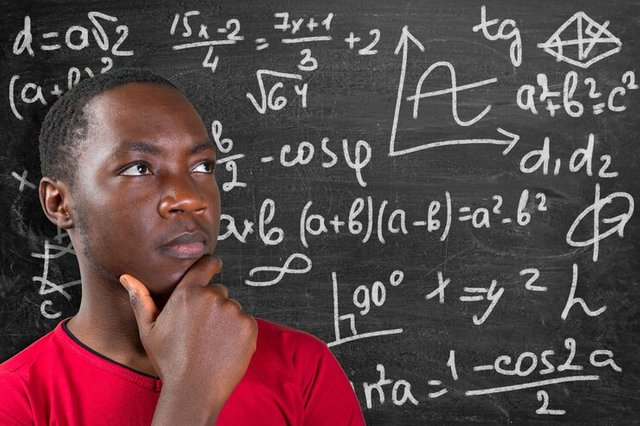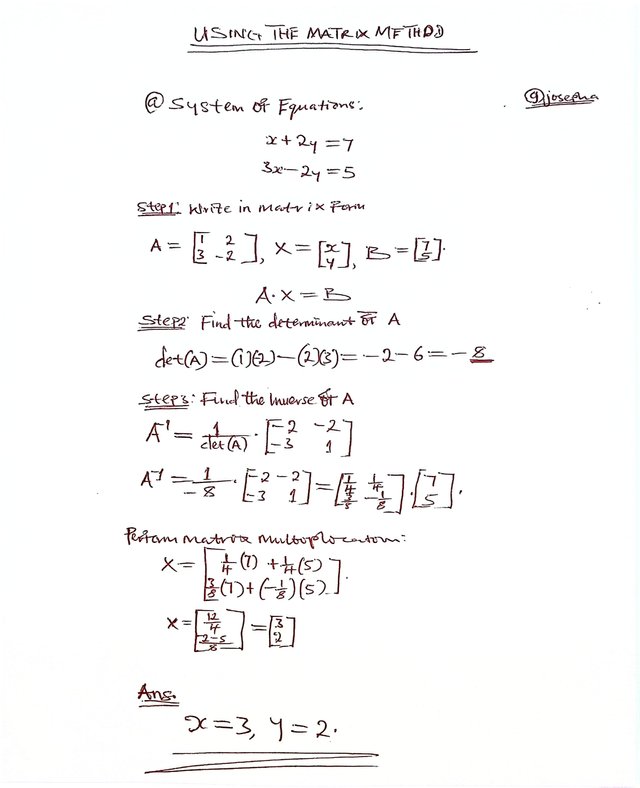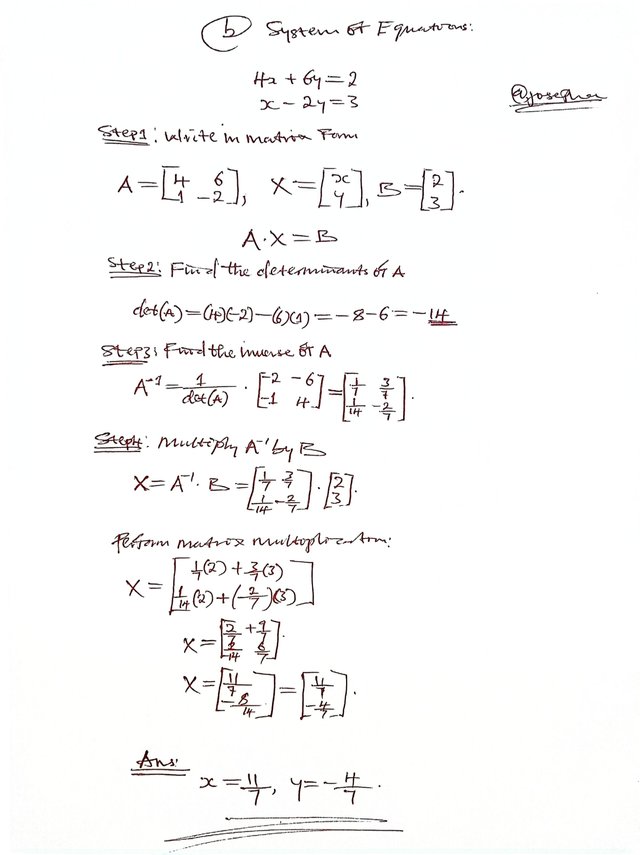"SLC-S22W3//Equations and Systems of equations."
HAPPY NEW YEAR TO YOU!
 |
|---|
• Explain the difference between linear and nonlinear systems of equations. Provide examples of each type of system of equation and describe their general forms.
Let's take a look into the difference between linear and nonlinear systems of equations with examples.
Linear Systems of Equations
By definition, it is a system of linear equations that consists of equations in which each term is either a product of a constant or constant and a single variable. This implies that the variable of linear systems of equations are not raised to any power except 1, in which there are nonlinear operations or no products that involve variables. The general form of Linear system equations is:
a1x1 + a2x2 + ... + anxn = b
In the above equations a1, a2,..., an are constants (coefficient), x1, x2,..., xn are all variables, which b is a constant.
Example:
2x + 3y = 5
x - y = 1
Above is an example of a system of two linear equations.
Nonlinear Systems of Equations
By definition, it is a system of nonlinear equations that includes at least one equation that is not linear, which implies that the variables may involve powers that are greater than 1, roots, products of variables, trigonometric functions, etc. The general form of Nonlinear system equations is:
f1(x, y) = 0, f(2(x, y) = 0
In the above, equations both f1 and f2 are nonlinear functions of the variables.
Example:
x2 + y2 = 25
x + y = 25
Above, is an example of a system of two nonlinear equations.
• Describe any one method for solving a system of linear equations and share at least one step-by-step algebraic example. (It should be other than substitution, elimination, and graphing method)
Solving Systems of Linear Equations
Here we will be using the matrix method which involves representing a system of linear equations in matrix form and then solving the equations via the use of matrix operations. In solving this we will have to apply the following steps:
- Expressing the system in Matrix form
- Look for the inverse of matrix A denoted as A⁻¹
- And then Multiply A⁻¹ by B to solve for X.
Example:
Let's solve for the system of equations:
2x + 3y = 13
x - 2y = -4
Solution
Write out the system in matrix form
A = [[2, 3], [1, -2]], X = [[x], [y]], B = [[13], [-4]].
Our equation becomes: A * X = B.Look for the determinant of A
det(A) = (2)(-2) - (3)(1) = -4 - 3 = -7. Look for the inverse of A
A⁻¹ = (1/det(A)) * [[-2, -3], [-1, 2]]
A⁻¹ = (1/-7) * [[-2, -3], [-1, 2]] = [[2/7, 3/7], [1/7, -2/7]].
Let's then Multiply A⁻¹ by B
X = A⁻¹ * B = [[2/7, 3/7], [1/7, -2/7]] * [[13], [-4]].
X = [[(2/7)(13) + (3/7)(-4)], [(1/7)(13) + (-2/7)(-4)]]
X = [[26/7 - 12/7], [13/7 + 8/7]]
X = [[14/7], [21/7]] = [[2], [3]].
Final answer
x = 2
y = 3.
• You need to solve the following system of linear equations: (a) x + 2y = 7, 3x - 2y = 5 (b) 4x + 6y = 2, x - 2y = 3 (You are required to solve these problems at the paper and then share clear photographs for adding a touch of your creativity and personal effort which should be marked with your username)
Here I used the Matrix Method to solve both systems of equations which you can see as shown below.
(a)
x + 2y = 7
3x - 2y = 5

(b)
4x + 6y = 2
x - 2y = 3

The steps used in solving the system of linear equations are as follows.
I write down the matrix form
I find the determinant of A
I find the inverse of A and perform the matrix multiplication
Task 4: Scenario number 1
Problem:
Since we are given a system of linear equations as follows:
2x + 3y = 130 (cost of materials)
x + 2y = 110 (cost of labor)
The company wants to produce x = 50 units of product A. At this point, we will need to find y, the number of units of product B.
- **Substitute x = 50 into the equations
2(40) + 3y = 130
100 + 3y = 130
3y = 130 - 100
3y = 30
y = 10
- We then verify using the second equation
x + 2y = 110
50 + 2(10) = 110
50 + 20 = 110
110 = 110
Final Outcome
If the company produces x = 50 units of product A, it means they can produce y = 10 units of product B.
Scenario number 2
Problem:
Since we are given a system of linear equations as follows:
x + 2y = 80 (cost of ingredients)
2x + y = 70 (cost of labor)
The bakery wants to produce x = 30 cakes**. We will have to find y which is the number of chocolate cakes.
- Substitute x = 30 into the equations
30 + 2y = 80
2y = 80 - 30
2y = 50
y = 25
- We then verify using the second equation
2x + y = 70
2(30) + 25 = 70
60 + 25 = 70
70 = 70
Final Outcome
- x = 30 cakes of vanilla
- y = 25 cakes of chocolate.
I am inviting; @dove11, @simonmwigwe, and @abdullahw2
Cc:-
@khursheedanwar